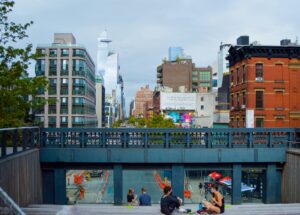“Cities have the capability of providing something for everybody, only because, and only when, they are created by everybody.”– Jane Jacobs
The great urbanization process of today carries great challenges, but also presents great opportunities. A problem that most City Mayors are facing today is that the apparatus for building and managing cities – professional and legal systems – is adapted for a 20th century industrialist realm that focuses on technical systems more than on human interaction. In order to change the objectionable building traditions that conflict with the contemporary economic system, the long term goals of the building industry and with the needs of ordinary people, a political initiative on a local level is greatly needed.
The organizers of ‘The Future of Places’ conference series –Ax:son Johnson Foundation, KTH Royal Institute of Technology, United Nations Human Settlements Programme (UN-Habitat), and Project for Public Spaces – are convinced that the most productive way for a renewed approach to cities is a shift of focus from objects (architectural displays) to places (public spaces). This conference series aims to demonstrate and reiterate that having access to public space is not the sole concern – equally as important are the elements of planning, design and management of those public spaces.
In terms of the three pillars of sustainability (economic, social and ecological and often the fourth one, cultural), a high-quality public space environment can have a meaningful impact, significant benefits and play a major role in the economic vitality of urban centers (be it large or small)- it is therefore a necessary part of any successful regeneration strategy in cities, towns and communities. Furthermore, the social dimensions of public spaces are essential in terms of democracy, inclusiveness and openness to all citizens, regardless of age, ethnicity and gender. With adequate design and management, public spaces can create contemporary agoras and foster social ties, links and networks of a kind that has been latterly disappearing in many urban areas.
Public space has always been the nexus of conflict and potential struggle over claims to its control and over the rights of occupation of different groups in society. The contemporary postmodern condition of the city, the escalating economic crisis and the societal divide has created new forms of insurgency and appropriation of public spaces in the wider sphere of the right to the city by different ethnic, social, economic, age and cultural groups.
Examples of successful and prominent public spaces can be found both in developing and developed countries from the great square of Jemaa el-Fnaa in Marrakesh, to Plaça del Sol in Barcelona or the new Superkilen Urban Park in Copenhagen, Stockholm’s Kungsträdgården to The Circle in Uptown Normal, Illinois, or Plaza Hidalgo in Mexico City.
“Urbanization is the defining trend of the 21st century; by 2030, 75 percent of the world’s 9 billion people will be living in cities. And urbanization is occurring most rapidly in places with the greatest lack of planning for urbanization.”
– UN-Habitat Executive Director Joan Clos
Visit the Youtube channel of Future of Places
Recommended by Luisa Bravo











More Stories
A stealthy reimagining of urban public space by Elizabeth Diller
Security by Design: Protection of public spaces from terrorist attacks
10 years of Global Public Space Programme – Annual Report 2022 and reflections on a Decade of Public Space